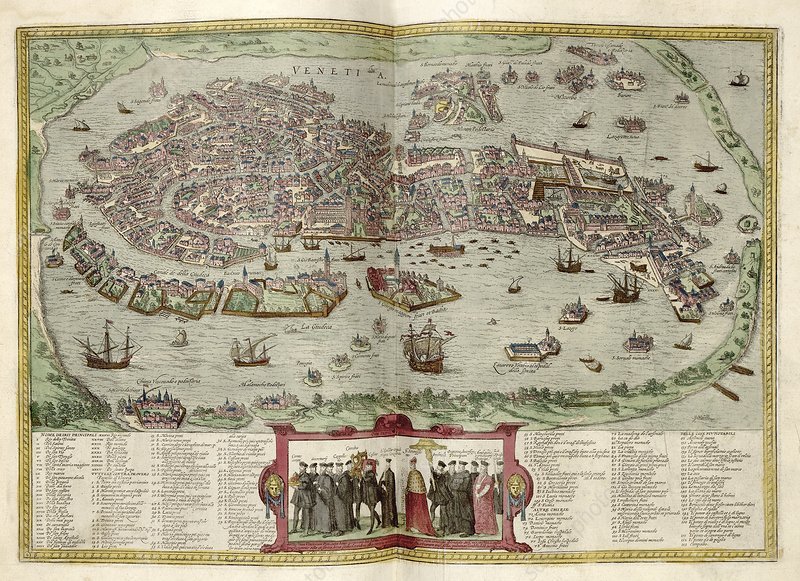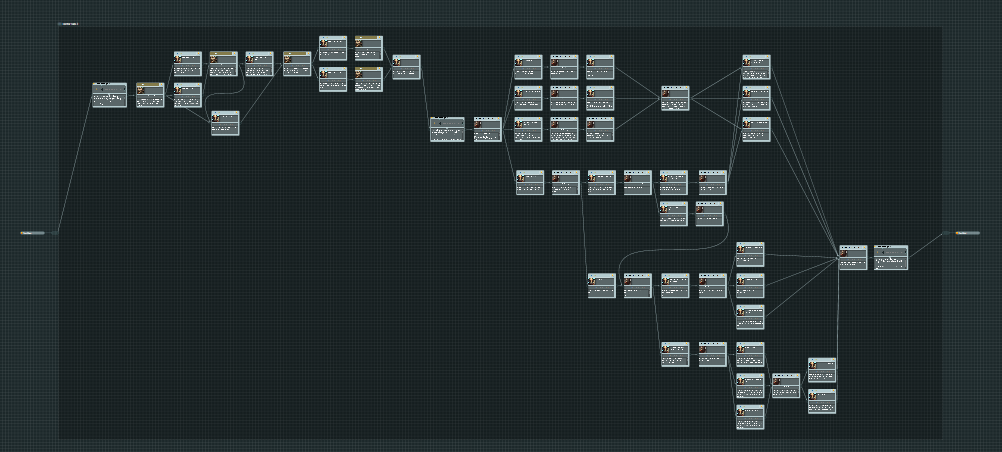
Plague in Venice
Plague in Venice is a historical game set in 14th-century Venice during the Black Death. The game’s purpose is to capture the horror and despair of the period while providing the players with options to improve the city’s measures to combat the spread of the plague.
To be played by four players at a time, I developed four distinct player characters, the Advisor, the Doctor, the Priest, and the Doge who can all be played as male, female, or non-binary. Each player character has a unique path of dialogues that has them interacting with a varied cast of non-player characters ranging from the Harbormaster and Bishop of Venice to disgruntled nobles and starving citizens.
Driven by narrative choice, I developed a robust narrative system using articy:draft 3 to allow for variables and impactful dialogues. My main goal was to make hundreds of lines of interactive dialogues with branching choices that affect the outcome of the game.
Research
As with any writing project, my role began with research. And in this situation, I was particularly suited for the role as I have a Master’s degree focused on medieval history and cultures.
Not every game has such a historically influenced goal in mind, but the principles of research are the same for any game project. As a narrative designer and writer, I need to be able to capture the essence of a place and time outside my own quickly and in interesting ways.
By reading accounts of other plagues like A Journal of the Plague Year by Daniel Defoe, works like The Decameron by Giovanni Boccaccio that tell of fictional experiences of those who lived through the Black Death, and by drawing on my own experiences in the recent COVID pandemic, I was able to quickly assemble specific narrative storylines that we wanted our players to experience.
Narrative System
To construct an expandable grouping of dialogue trees that would follow the gameplay’s flow, I built central discussion nodes for the different player characters to come together to discuss their next improvement to the city. After each round of dialogue nodes (conversations with NPCs), the player characters unite to decide upon what they want to implement in order to try to save Venice.
These discussion nodes’ choices are dependent on the variables from the previous dialogue nodes. The players then vote on what they would like to implement, but the player playing as the Doge ultimately decides what will be done.
As the game expanded, we found that sometimes choices made in turn two would need to effect the group’s choices for turn 4. To accommodate this, the articy:draft 3 design system worked very well, allowing us to implement variables from previous nodes into future choices.
Character Building
One challenge with any gaming project is to create player characters who are both unique and relatable at the same time. To ensure that our players would be able to feel like they were their character we allow a certain amount of customization to their dialogue choices as the game progresses. Consistent choices that are cruel to the NPCs leads to the player character receiving less than favorable interactions with characters that would sympathize with those they have been terrorizing.
This also called for some worldbuilding on my part to ensure the web of NPCs was intertwined and relations between them and certain factions within the city were concrete on the backend. By crafting characters that the players can feel pathos for and admire, we created a world of Venice in the 14th century that feels realistic and tangible.
Branching Narrative
Different situations the player experiences influence the number and complexity of the dialogue options.
In this example, the player character first needed to have some aesthetic choices to help them define who their character is in their own mind. These guided and seemingly superfluous choices, then give the player a better sense of how they would act when they are faced with more difficult choices that challenge their moral compass.
By setting up the more impactful choices with aesthetic, character-building choices, we guide the player to know their character better, deepening their connection and immersion, before dropping the bomb of asking them to feed a peasant dying of plague or draw water from a potentially poisoned well to test it for contamination.
Choices that Matter
In some instances, the player character’s choices drive the conversation with the NPC in entirely different directions.
Sometimes the information they would receive would just be an interesting story or rumors from the city that do not directly relate to the central plot. By building links between completely off-topic dialogue branches back into the central narrative, players can potentially still learn the information they need. Or they can choose to learn about sea monsters and mermaids from an old sea captain…
How much the player learns about cures and remedies for the plague then influences their choices in the central discussion nodes, encouraging active engagement with the NPC conversations.
In some parts of the gameplay, the player is asked to choose between an expeditious solution and one of compassion. These moments have weight, bringing the narrative into sharp focus. By their clicking one button, they might condemn a quarter of the city to suffer, or they might make themselves rich.
These kinds of impactful decisions are peppered throughout the game, setting the pace and tone for Plague in Venice.






